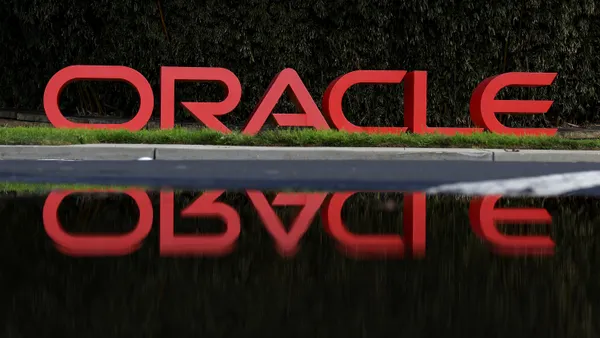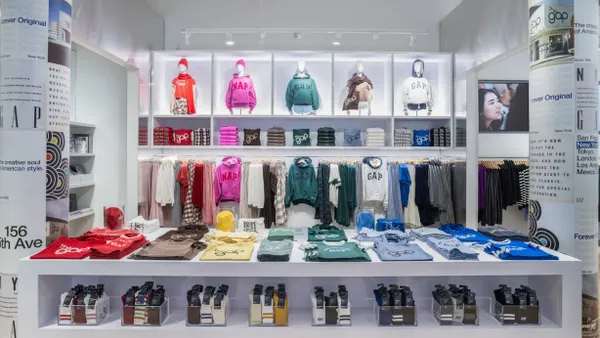Dive Brief:
- Boston Scientific and EY veteran Michael Campbell, CPA will serve as CFO for Comera Life Sciences, according to a company announcement Thursday.
- Campbell has served as interim CFO for the firm since April 13, following the departure of State Street veteran and fellow CPA Kevin P. Kavanaugh, who announced his resignation earlier in the year according to an April 6 filing with the Securities and Exchange Commission (SEC). Comera announced its plans to conduct an executive search to fill the role in the filing, with Campbell slated to serve in the role while the search commenced.
- Campbell previously worked with Comera as a consultant through financial advisory firm Monomoy Advisors, where he served as senior consultant for their CFO practice beginning February 2022. He also has held roles as the corporate controller and head of global tax for in vitro diagnostics firm Ortho Clinical Diagnostics and is a 19-year veteran of medical technology manufacturer Boston Scientific, where he held various executive roles including VP of investor relations and VP of finance for Asia Pacific and emerging markets.
Dive Insight:
Campbell will focus on getting long-term institutional investors interested in the firm, he said, with the company currently conducting a targeting process to find such investors as well as speaking with equity analysts with the hopes of drumming up excitement.

The company is also continuing to pay close attention to the market, he said, as biotechnology ebbs from its former mid-pandemic highs.
“The biotech market has gotten hit pretty hard recently, and so we're kind of just looking at the market itself, really kind of focused on what investors are thinking,” he said. “But one of the things Comera offers is, in biotech we feel like we're undervalued and a lot of biotech is, so it's a good time to get in, and I think given the space we’re in, the returns could be beneficial in the long run.”
Biologics are a $285 billion market. Comera is a life sciences company which specializes in developing ways to turn intravenous biologics into subcutaneous variants. It is currently in the pre-clinical stage, Campbell said.
It became a public company in May and has revamped its business structure to be more aggressive over the course of the year, announcing partnerships with a leading U.S. biotech and top 10 pharmaceutical firm as well as with Intas Pharmaceuticals, where the company will work to develop future projects using its formulation SQore™ platform. Campbell will work to further expand the platform, he said, and the company also has plans on the docket to craft an internal pipeline within the biologics arena likely in 2024.
Comera became a publicly traded company on May 20 via merger with special purpose acquisition company (SPAC) OTR Acquisition Corp. Shares closed down 9% at $8.85 on the day with 94% of shares redeemed, according to a May report from Boardroom Alpha. Shares of the company are currently trading at $3.15 per NASDAQ.
The decision to go public via SPAC occurred before Campbell’s time, he said, but the decision was likely a vehicle to get to public markets more quickly.
“The company went down a path to go public, and now we kind of have more opportunities from a capital structure and to advance our platforms going forward,” Campbell said of the SPAC.
Healthcare SPACs face increased competition
SPACs, which involve so-called “blank check” companies which go public and collect investor capital with the aim of merging with typically private firms — therefore allowing private companies to bypass much of the regulatory stringency associated with typical initial public offerings (IPOs) — experienced a spike in popularity during the early years of the global COVID-19 pandemic. Healthcare SPACs reached their zenith mid-pandemic, with the number of biopharmaceutical SPACs increasing 2,800 percent between 2018 and 2021, according to GlobalData in a March report.
Their popularity has since decreased in the face of both increased regulatory scrutiny and growing competition — a total 107 SPACs with healthcare as their targets went public in 2021, and those formed in the latter half of 2021 had distinctly less resources to spare than their earlier competitors. Of the $23.09 billion generated by healthcare SPACs in 2021, only $8.93 billion were raised by such SPACs in the last six months of the year, according to a January S&P Global breakdown.
The ebb and flow of SPACs as a vehicle to reach public markets is not necessarily out of the norm, Maxim Jacobs, senior VP of investor relations for IR and PR firm Russo Partners, LLC, pointed out. SPACs tend to be a bit of a late-cycle fad, he said, noting SPACs were numerous approximately 15 years ago, when regulations may have been slightly more onerous than those in present day, before falling somewhat out of view until present day.
“I think that enough people are going to get burned that I think a lot of people won’t want to hear about them anymore,” Jacobs said of the current SPAC market, noting that we may see more reverse mergers in the future instead as they constitute less of a confusing process — as well as less risk attached for investors.
“It’s just a lot of risk for people to take,” he said. “If you're on the buy side right now you're kind of deluged with companies that could be very good ideas … They’re totally beaten down, they’re under cash. Why would you go with a new issue?”
SPACs have also fallen under increased regulatory scrutiny following their mid-pandemic uptick, with the SEC proposing a potential rule that would add further regulatory pressures to SPACs. The draft is aiming to provide SPAC investors with similar protections to those they would receive during IPOs. Financial groups including the American Securities Association (ASA), the SPAC Association and the CFA Institute are among those who have urged the SEC to relax or augment the rule’s proposed guidelines, with many arguing the rule would create too much liability for involved parties, according to a Tuesday report by Reuters.
The SEC’s proposal would enhance disclosures regarding the “de-SPAC” or target takeover, requiring sponsors to show the deal has been vetted by third parties and to explain if it is fair to investors, according to Reuters. This could potentially place SPACs at a disadvantage to IPOs, according to financial groups, with many noting it goes further than current M&A guidance. Though Jacobs declined to speculate on what could occur if the rule was passed in its current form, such guidance would likely make conducting SPACs harder than at present for firms, he said.
Anna Pinedo, partner for law firm Mayer Brown, said in an email companies should be attentive to the SEC’s adopting release and how it clarifies many of the matters relating to statutory underwriter status.
“Companies also likely will be quite focused on the availability of the safe harbor for projections,” Pinedo wrote. “It is also possible that some of the measures contemplated by the proposed amendments might face legal challenges. Companies also might keep an eye on the pending legislation in Congress related to SPACs, which address the safe harbor for projections as well as enhanced dilution and conflicts disclosure. All of this will factor into whether combining with a SPAC will remain a viable and an attractive way to enter the public markets for private companies.”
Editor's note: This story has been updated to correct the value of the biologics market and the ranking of one of the firms Comera partnered with. Biologics is a $285 billion market and Comera partnered with a top 10 pharmaceutical firm.













